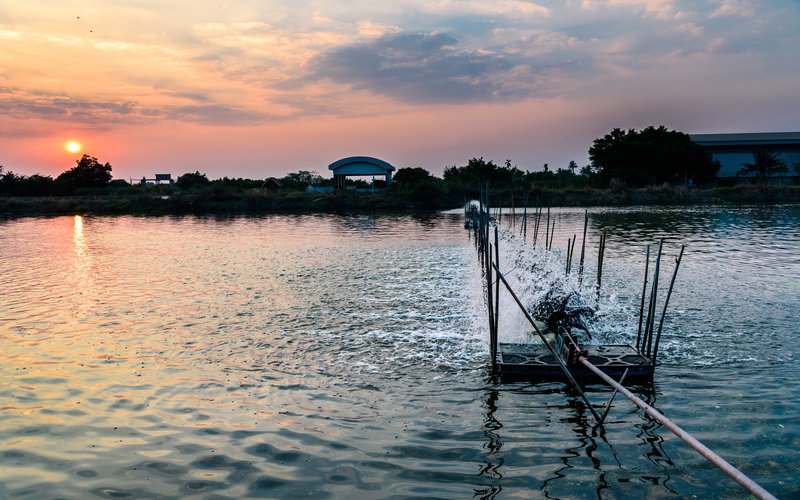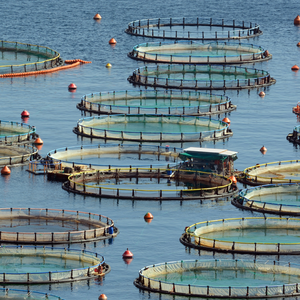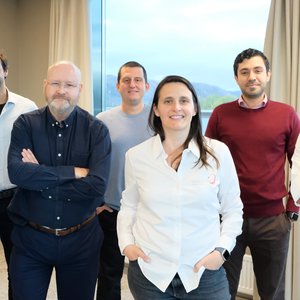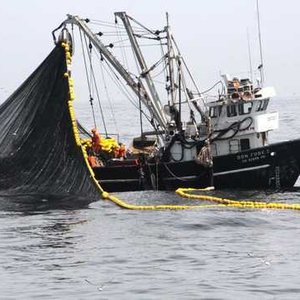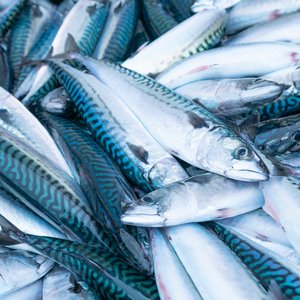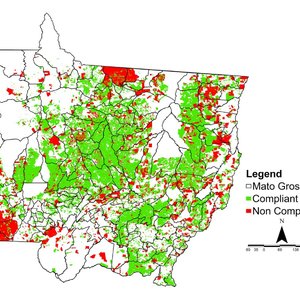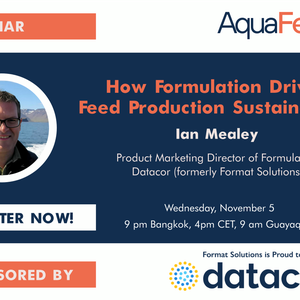Sponsored by Lallemand Animal Nutrition
Strains or species?
In microbiology, a species is a group of bacteria sharing core genetic traits, while a strain is a subtype that may differ in metabolism, ecological niche, or interaction with hosts (Göker & Oren, 2024).

Figure 1. illustration on how two breeds from the same species can be different
The importance of breeds within a species is immediately apprehended when thinking about dogs. Just like all dog breeds belong to the same species (Canis lupus familiaris), a skillful and agile Border Collie clearly has different characteristics and abilities from the calm and low-endurance Bulldog.
For bioremediation in aquaculture, selecting the right bacterial strain can be more important than choosing the species. Indeed, within the same species, different strains exhibit vastly different metabolic capabilities such as ammonia assimilation, enzyme production/organic matter degradation, or pathogen inhibition. Tolerance to salinity and bioactivity under different oxygen levels are also strain-specific traits driving efficacy within specific aquaculture systems. Similarly, the capacity to form biofilms is often strain-dependent. Going further, field trials have demonstrated that strain-optimized consortia can have superior bioremediation or animal health outcomes associated with enhanced capacities for surface association.
In summary, it is evident that relying solely on species-level classification can lead to ineffective applications. Inversely, functional performance and ecological compatibility are determined at the strain level, not the species level.
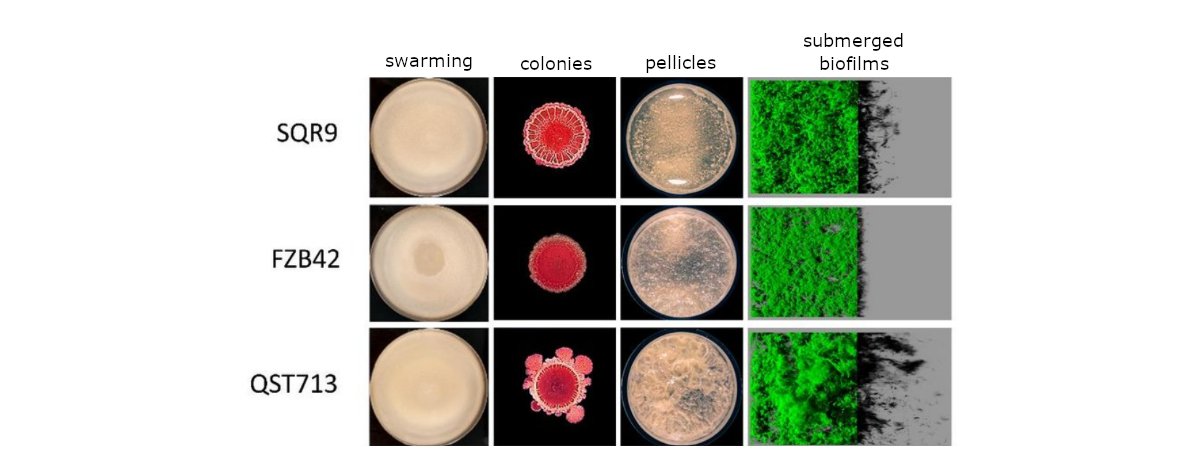
Figure 2. Bacillus velezensis strains exhibit different swarming capacity, colony morphology, ability to form pellicles and submerged biofilms (Pandin, 2018).
Pathogens' inhibitions: Not all bacteria can do it
Not all bacterial strains possess the ability to inhibit pathogens in aquaculture environments. The antagonistic effect is often strain-specific and dependent upon complex interactions with the host, the environment and the pathogen. It is due to genetic diversity that affects the production of antimicrobial compounds, quorum-sensing signals, or competitive traits. These differences may also result from environmental adaptations, where certain strains have evolved under specific conditions to be more effective in pathogen suppression. Additionally, the interactions between these strains and the surrounding microbiota or host organisms can influence their inhibitory performance, making some strains more suitable for biocontrol applications than others.
According to Golnari et al. (2024), only certain specific strains demonstrate consistent pathogen inhibition under aquaculture conditions.

Figure 3. Effect of different biocontrol strains at various concentrations on V. parahaemolyticus growth. Based on data from Lallemand and Aquapharm
Proven adaptability to your salinity level
Halotolerant or halophilic bacteria can regulate their internal osmotic pressure by accumulating compatible solutes, which allows them to survive across a wide range of salinities (Galinski, 1993). Non-adapted strains, however, experience osmotic stress that disrupts cellular integrity and inhibits metabolic activity. It is important to validate that the strain(s) used are adapted to the current farm salinity.
Table 1. Growth capacity of 3 bioremediation bacterial blends at different salinities. Data from Aquapharm/Lallemand Animal Nutrition

Proven adaptability to various oxygen levels
Oxygen levels vary greatly between the different microenvironments of an aquaculture pond, from the water column and flocs, to the sediment-water interface and deeper soil layers. These gradients are influenced by factors such as phytoplankton photosynthesis and respiration, aeration systems, organic matter accumulation, and animal biomass. Therefore, it is essential to apply a bioremediation product capable of functioning under diverse oxygen conditions, including aerobic, microaerobic, and anaerobic zones. This adaptability ensures consistent microbial activity and effective waste degradation throughout the pond ecosystem.
Some aquaculture bioremediation bacteria possess flexible metabolic pathways that allow them to switch between aerobic and anaerobic respiration, enabling them to thrive under varying oxygen conditions (Geng et al., 2021). In contrast, other strains are obligate aerobes or anaerobes, lacking the enzymatic machinery to adapt to fluctuating redox environments.
Table 2. Strain ability to grow depending on DO level. Due to their capacity to grow very well from anaerobic to aerobic conditions, all six strains have been included in Lalsea Biorem, a commercial bioremediation product of Lallemand Animal Nutrition.
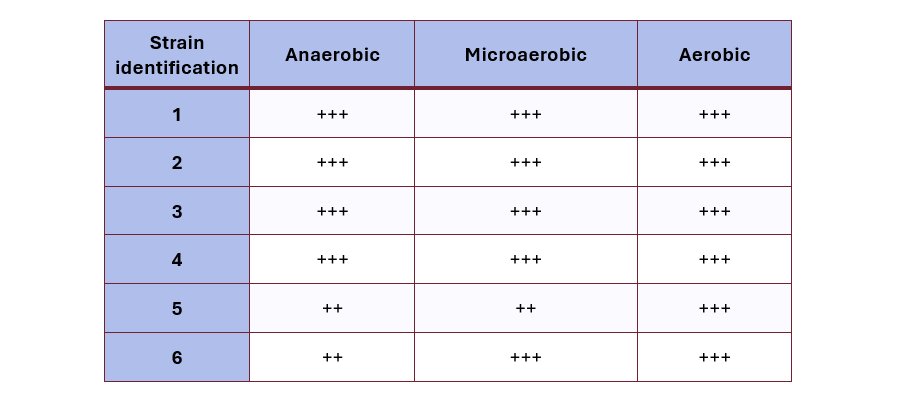
Enzyme production: The key to organic matter digestion
The ability of selected bioremediation strains to produce a broad range of extracellular enzymes—such as proteases, lipases, amylases, and cellulases—is critical to the efficient degradation of organic waste. Together, those enzymes break down complex organic matter into smaller, soluble molecules that can be readily absorbed and metabolized by the very bacteria that secrete them. The enzymatic strategy of the strain can provide access to otherwise inaccessible substrates, enhancing their ecological competitiveness and survival as well as their bioremediation value. This enzymatic specificity is highly strain-dependent, as different bacteria possess distinct genetic and regulatory mechanisms that determine their enzymatic profiles (Domingues et al., 2022). Accordingly, a well-designed blend of complementary bioremediation strains will be capable of efficiently synthesizing a consistent panel of digestive enzymes under varying conditions. This will enable the breakdown of organic matter of distinct composition within different aquaculture settings; securing bioremediation versatility hence performance.
For example, certain Bacillus subtilis strains produce high levels of amylase, while others do not.

Figure 4. Amylase activity of different strains of Bacillus subtilis. Based on data from Lallemand and Aquapharm.
Ammonia assimilation by heterotrophs: A selective advantage in nitrogen management
In heterotrophic bacteria used for aquaculture bioremediation, the capacity to incorporate ammonia into cellular biomass plays a pivotal role in mitigating nitrogen accumulation and phytoplankton overbloom. This trait is not uniform across strains as it is dependent upon the efficiency of nitrogen-assimilation pathways, such as the GS-GOGAT (Glutamine Synthetase–Glutamate Synthase) cycle, which will vary with the genetic background and environmental responsiveness of each strain (Sørensen & Jensen, 2007). Some heterotrophs demonstrate a high rate of ammonia uptake even under fluctuating carbon-to-nitrogen ratios. This makes such strains particularly valuable in nutrient-rich systems such as high-density and (semi)-closed systems. Combining strains with complementary nitrogen assimilation profiles enhances the system’s ability to handle diverse and dynamic nitrogen loads effectively.
By assimilating ammonia, carefully selected heterotrophic strains reduce the burden on nitrifying bacteria, fostering a more stable and efficient nitrification process while minimizing the risk of nitrite spikes.
Bioremediation in quaculture: The importance of reliable sourcing
With a growing demand across aquaculture, the bioremediation market has attracted a wide range of suppliers together offering a plethora of products, characteristics, and functionalities. However, the quality of available products varies significantly and, in various instances, commercial considerations appear to take precedence over actual functionality.
This is also due to the variability and complexity of pond aquaculture, which clearly complicates the strict assessment of a bioremediator’s performance and its repeatability. As a result, decisions are sometimes based on price or marketing rather than scientific and technical merit. Nonetheless, to help secure optimal results, it is essential to request robust scientific and technical evidence that the product:
- It is adapted to your specific environment
- Can meet your operational needs, such as:
- Enzyme production
- Pathogen inhibition
- Ammonia assimilation
- Microbiota modulation (a detailed explanation will be provided in an upcoming article)
Lallemand: A century of microbial expertise
With over 100 years of experience in the development, production, and commercialization of microorganisms, Lallemand stands out for its scientific rigor and innovation. The company owns Aquapharm, which houses the world’s largest private collection of marine microorganisms, comprising over 12,500 strains, including more than 6,000 fully sequenced.
This unique resource enables Lallemand to select highly specific strains tailored to the needs of aquaculture professionals, delivering targeted and effective bioremediation solutions that are scientifically validated and environmentally appropriate.
References
Göker, M., & Oren, A. (2024). Valid publication of names of two domains and seven kingdoms of prokaryotes. International Journal of Systematic and Evolutionary Microbiology, 74(1), 006242.
Golnari, M., Bahrami, N., Milanian, Z., Rabbani Khorasgani, M., Asadollahi, M. A., Shafiei, R., & Fatemi, S. S.-A. (2024). Isolation and characterization of novel Bacillus strains with superior probiotic potential: comparative analysis and safety evaluation.
Galinski, E. A. (1993). Compatible solutes of halophilic eubacteria: molecular principles, water-solute interaction, stress protection. Cellular and Molecular Life Sciences, 49, 487–496.
Geng, B., Li, Y., Liu, X., Ye, J., & Guo, W. (2021). Effective treatment of aquaculture wastewater with mussel/microalgae/bacteria complex ecosystem: a pilot study.
Domingues, S. Z., Timmers, L. F. S. M., & Granada, C. E. (2022). Cellulase production by bacteria is a strain-specific characteristic with a high biotechnological potential: A review of cellulosome of highly studied strains. Cellulose, 29, 8065–8083.
Sørensen, J., & Jensen, L. E. (2007). Ammonia assimilation in N₂-fixing systems. In Nitrogen Fixation: Origins, Applications, and Research Progress. Springer.


